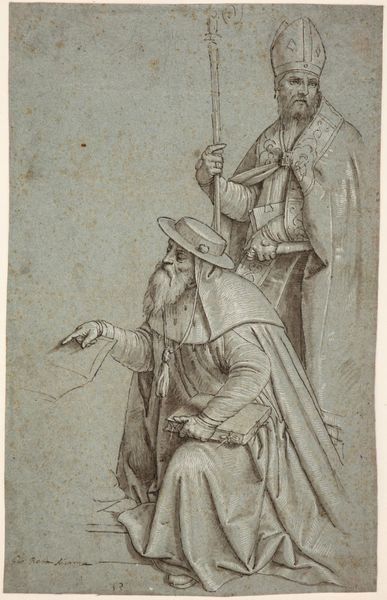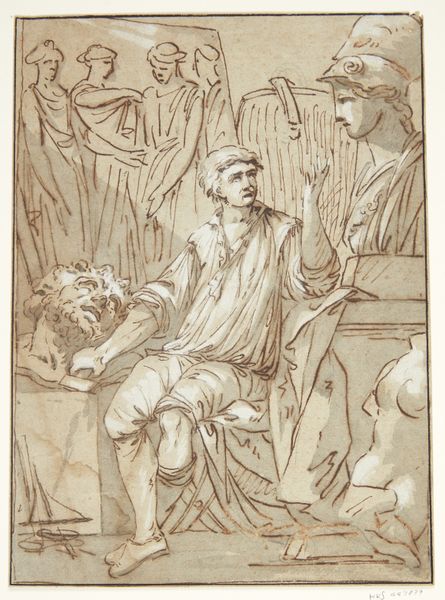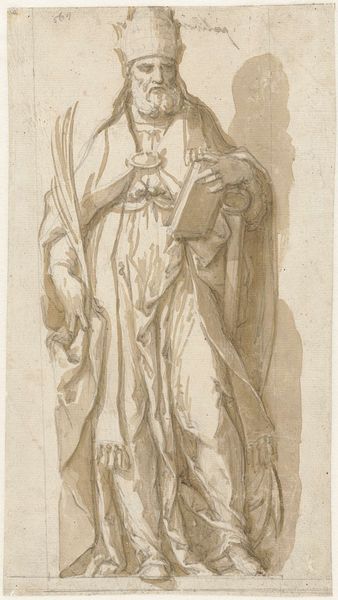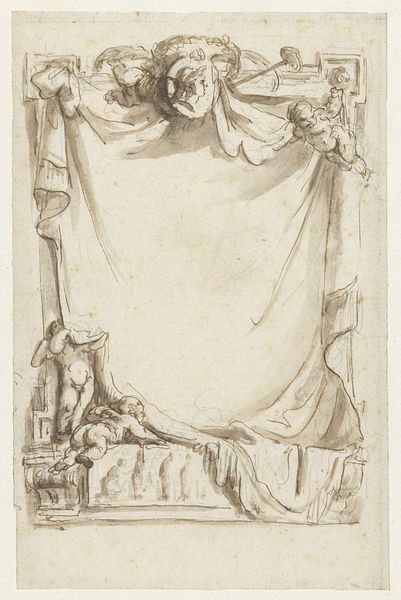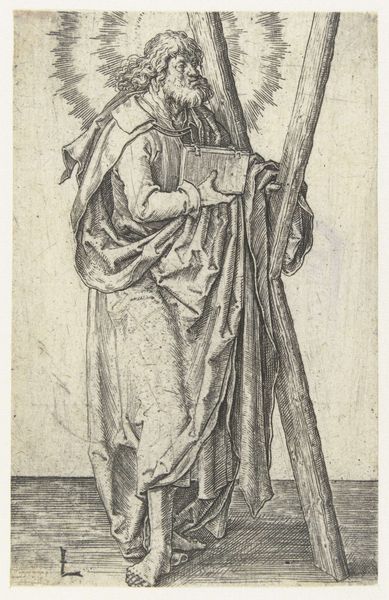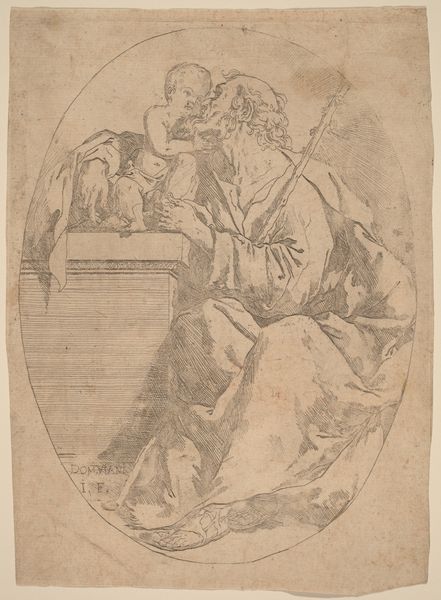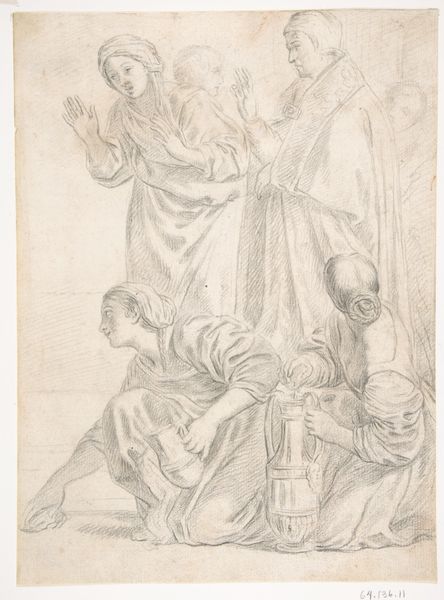
drawing, paper, ink, pen
#
portrait
#
drawing
#
charcoal drawing
#
mannerism
#
figuration
#
paper
#
11_renaissance
#
ink
#
pen
#
portrait drawing
#
history-painting
#
academic-art
Dimensions: overall: 39.9 x 23.3 cm (15 11/16 x 9 3/16 in.)
Copyright: National Gallery of Art: CC0 1.0
Curator: This drawing is "Saint Mark with Two Bishops and Putti" by Palma il Giovane, created around 1580. The piece uses pen, ink, and charcoal on paper. Editor: There's a luminous, ethereal quality to the shading that feels otherworldly, despite the earthiness of the material. It's an intriguing paradox. Curator: It showcases a composition reflective of Mannerist aesthetics: note the exaggerated poses and the spatial ambiguities, with Saint Mark seemingly elevated, yet still connected to the figures below. Consider also the implications of the putti framing the central figure, their presence functioning almost as compositional parentheses. Editor: Those bishops below, are they intended as direct patrons or stakeholders? The robes, the staff; it speaks volumes about ecclesiastical authority, but where does that authority stem from? Curator: The positioning is particularly telling. Saint Mark, pen in hand, represents divine inspiration—the act of writing is here transformed into a source of power, implicitly sanctioned, or perhaps even instigated, by these representatives of the Church. Note the use of chiaroscuro—the highlights accentuate the saint’s face and book, drawing our eyes towards the creation of sacred text. Editor: And that lion at his feet? It seems to underscore both the strength and perhaps the tamed power of the Evangelist's words under the aegis of these worldly figures. Was this a preparatory sketch for a larger commission, do you think? The detail feels remarkably finished. Curator: Possibly a study. Il Giovane often produced detailed drawings as explorations of form and composition before embarking on grander projects. The materiality enhances this aspect, suggesting immediacy and perhaps even a glimpse into the artistic process itself. It could also be a commentary about who is allowed to dictate what narrative gets told, with heavenly consent. Editor: It all comes back to narrative control and religious iconography; these layers invite endless debate, right up to how religious iconography interacts with politics today. Curator: Absolutely. And considering this work through the lens of visual rhetoric helps unlock potential sociopolitical readings tied to the artistic circles within the region and timeframe, the exact interpretation shifts with each epoch. Editor: Thinking about it from that point of view casts the piece in an entirely different light. I see a discourse about patronage and divine justification, not just a saintly image.
Comments
No comments
Be the first to comment and join the conversation on the ultimate creative platform.
